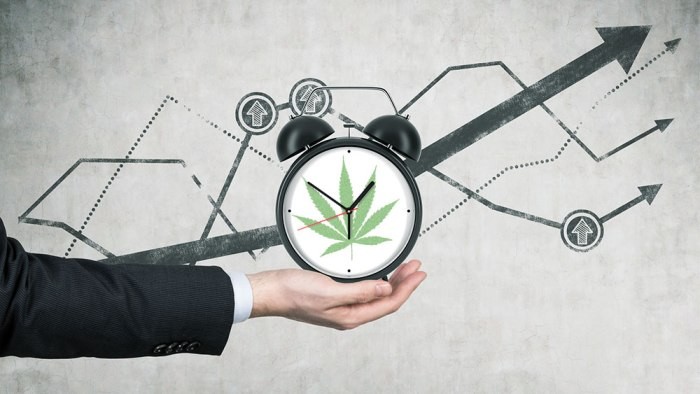Cannabis
A History of Cannabis: From Origin to Legalization
Cannabis is the talk of the town at the moment. This is especially true in the wake of the legalization of cannabis in Canada. Whilst it is excellent that people are talking about it, many questions are raised as to how much people actually know about cannabis and where it comes from.
With that thought in mind, we will delve a little deeper into the leafy green history of our favorite plan and hopefully come up with some insightful information whilst dispelling a myth or two.
What is Cannabis?
Cannabis as we know it originates from the cannabis plant. There are of course many different names associated with cannabis. These include marijuana, and hemp among others. In fact, these are all variants derived from the cannabis plant through their own unique processes and possessing a variety of slightly differing properties and effects. To keep disinformation to a minimum, we have prepared another article on the differences between cannabis variants.
While there is much debate about the different types of cannabis and its properties, generally we can say that cannabis is a psychoactive drug, the bulk of which is caused by THC. There are hundreds of other compounds present in the cannabis plant, and the uses of the plant and cannabis itself are widespread. These uses include as both a medical and recreational drug which has been used in one form or another for thousands of years.
In terms of impact, the medical use of cannabis has been shown to have a largely positive impact on a variety of conditions. This is a major reason why cannabis continues to become more and more legalized around the world.
Although many use cannabis recreationally to achieve a “high” which is enjoyable and can last for a short period of time, many species of cannabis, such as hemp oil, possess significantly lower levels of THC and are thus mainly beneficial for other purposes ranging from medical to dietary.
The Early Years as we know them
Cannabis has a much longer history of human use than many people seem to realize. In fact, the cannabis plant was likely first cultivated for human use around 3,000 BC according to historical data and remnants found of burned cannabis seeds in some central Asian locations. This is most likely the place of origin too, thanks to the suitable humidity of the climate, exposure to increased light and a suitably hot temperature.
As the global trade era advanced, so too did the trade in seeds. This meant that as early as 2,500 years ago, the uses of cannabis were widespread, although vastly differing from some of the modern day uses.
Hemp fiber has been used to make clothing, sails and rope, whilst the seeds had long been a source of food for the people.
Although historical uses for cannabis had tended to be more connected with the medical and ceremonial use, there is some evidence that populations, especially in the origin areas of Central Asia, were aware of the psychoactive properties cannabis possesses. This is exemplified through the noting of various preparation methods which may have been introduced in efforts to enhance the levels of THC.
Over the next 2,500 years or so, cannabis reached the various areas of what is now Europe and Asia, propelled by voyagers, tradesmen and times of trade and discovery. History also states that it was even used in some cases as an anesthetic during surgery and used by Chinese emperor Shen Nung in 2737 B.C.
In fact, history shows us that the drug did not reach the North American continent until the early 1900s. This is something around 5,000 years after its first noted uses. Cannabis purportedly arrived In the United States from Mexico during the Mexican revolution in 1910 with the plant first being declared illegal in the state of Utah in 1915. Within the 16 years that followed, cannabis was to be declared illegal in 29 states.
The Recreational and Medical Impacts
As we have noted already, the belief in cannabis as some form of medical tool dates back to the earliest conceptions of the plant. Thousands of years ago, it was used in ancient China and central Asia alike, credited with a variety of pain relieving properties.
Throughout ancient documentation, cannabis is credited with a litany of benefits. These include everything from pain relief to curing nose bleeds tapeworms in the ancient Greek society.
Moving into modern history, we can note that the first person to introduce cannabis to therapeutic medicine was Irish doctor William Brooke O’Shaughnessy in the 1830s. He had recognized and reported that cannabis was beneficial in treating stomach cramps and pains among sufferers of Cholera. This led to the increasing pharmaceutical sale of cannabis-derived products throughout European pharmacies in the late 1800s.
Progressing to the current day, the medical benefits of cannabis are well reported and on the cusp of re-entrance into mainstream society.
On the recreational side, there are again stories of recreational use abounding from central Asia and the European continent for centuries. Such recreational use did not however become prevalent in the United States until much later when the drug was introduced by the Mexicans in the early 1900s. The drug gradually emerged and in moves mainly driven by fear of the unknown a growing resentment towards Mexican immigrants during the great depression, became outlawed in many states less than a decade later.
In 1937, the Marijuana Tax Act criminalized all but industrial uses of the product nationwide, with farmer Samuel Caldwell being the first person prosecuted and sentenced to four years hard labor under the act.
As time has progressed, especially from the 1970s onwards, use of cannabis and the various types have become vastly popularized through culture. This has ultimately led to a nationwide, somewhat worldwide movement in many regions, campaigning for the legalization if cannabis and citing not least the positive medical impacts which this could lead to.
From Outlaw to Legalization
Though there remains a stern battle and progress to be made with the reintroduction of cannabis to mainstream society and the returning of its legal status, significant headway has already been made and is continuing in this regard.
Though largely tolerated in cities across Europe for generations, this is particularly true of the likes of Amsterdam, in the United States, the status of cannabis regarding legalization largely remained unchanged. This changed from December 2012 when Washington became the first US state to legalize use, quickly followed by Colorado. As of the time of writing, medical cannabis use is permitted in 31 states, with recreational use permitted in 9 states. Use only remains completely illegal in 2 states, Idaho, and South Dakota.
Many countries around the world are continuing to relax their stance on cannabis in terms of both medical, recreational use, and cultivation. This is happening in-line with social views on cannabis and the belief that it poses no long-term danger to recreational users and pointing to the extensive positive health benefits which have always been noted by academics and science throughout history.
It is expected within the next number of years that the trend of legalization will continue around the world. This should eventually lead to a mainstream access to cannabis for users around the globe both for the medical and recreational purpose.
This will ultimately produce a huge global market and decriminalize users who may have previously resorted to the black market for purchases. It will also lead to vast progress in medical fields where significant proof exists, especially in cases of pain management, that the use of cannabis and other by-products can be highly effective.
If there is to be one downside, it could possibly be pricing pressures within the cannabis industry. This has already been evidenced in the US states which have legalized cannabis and is a large worry for Canadian producers that increased supply could flood the market ultimately making production not cost-effective and reducing the overall product quality which is brought to market. This though, would be just a small bump in the road to widespread legalization and the milestones which it would represent.
Conclusion
The history of cannabis is much more extensive than many may have you believe, and in all of that many thousands of years since its first introduction to ancient societies, it has endured multiple turns in the road.
The biggest of these turns was represented by its global legal status and eventual criminalization after thousands of years of prior existence. This is a factor which is now a great issue to be overturned. With the eventual re-legalization of cannabis, another corner will have been turned which is representative of the free choice of society. This new chapter will hopefully bring about a new dawn also in the pursuit of medical research since it has been documented for thousands of years the positive impact that the cannabis plant can have on our health.
Health and enjoyment may soon go hand in hand as cannabis legalization and history embarks on its latest chapter.


